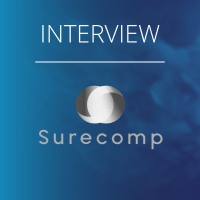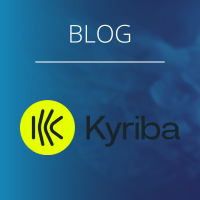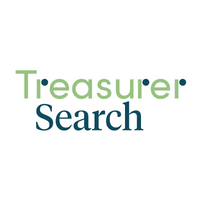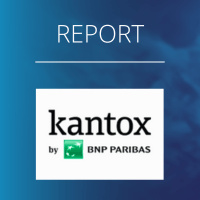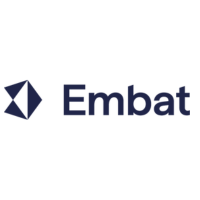Early June SWIFT, the largest interbank messaging system in the world, announced it would conduct experiments in collaboration with a number of financial institutions to test for blockchain interoperability.
In this blog I will go into more detail what Web3.0 is, what its core principles are, what Blockchain may bring, how blockchain and crypto currencies fit into Web3, what this combination may bring and what other technologies could contribute to Web3.0’s development.
The Road to Web3.0
The main evolutionary steps of the internet are often represented as the qualitatively different phases dubbed Web1.0, Web2.0, and Web3.0. The internet is now entering the third stage Web3.0 that is described as ‘read-write-own’.
Web1.0
Web 1.0 was the first iteration of the internet and represents the first arrival of the internet in late 1980s. It included only static ‘read-only’ messages, developed by only a few participants. However, Web1.0 had some great restrictions on interacting with the content. In the Web1.0 era, users couldn’t change online data or upload their own content to the websites they were interacting with.
Web2.0
Since 2004 the world witnessed the growth of Web2.0 with the emergence of social media and e-commerce platforms that started exploring new opportunities for reaching a wider audience. Instead of a ‘read-only’, the web evolved to be ‘read-write’, focusing on significant improvements in user participation and interaction.
Web2.0 has gradually emerged as a more interactive internet where users were more involved in generating their own content. Web 2.0 allowed users for creating their accounts through different applications, thereby developing their unique personal identities on the internet.
Web2.0 saw the rise of new types of centralized tech giants that began to control a disproportionate amount of the traffic and value generated on the web. Today, most websites, apps, and other online services are hosted on servers that are owned or rented by big corporations.
What is Web3.0?
Now, we are gradually shifting toward the next phase in the internet’s development journey, Web 3.0, that has become a catch-all term for the vision of a new, better internet. Some of the issues addressed by Web 3.0 would refer to user trust, security, transparency, privacy and reliability. Its central promises include making online platforms decentralized, trustless, and permissionless.
The decentralized architecture of Web 3.0 driven by technologies like blockchain aims to resolve the prominent issues emerging with Web 2.0, especially centralized control and concerns of data integrity.
This will be achieved through the interconnection and decentralization of data across networks that operate through decentralized protocols, along with opportunities for machines and users to interact with data.
With the third iteration of the web, Web3.0 users could gain access to an autonomous, open and intelligent internet. At its core, Web3.0 uses blockchains and cryptocurrencies to give power back to the users in the form of digital ownership.
Web3.0 puts power in the hands of individuals rather than corporations. Web3.0 thereby holds the promise of allowing people to own things digitally, easily transact online, and have more control of their personal data. Web3.0 allows companies to create decentralized apps (dApps) and services, where apps, online services, even finance—no longer need a centralized authority.
Blockchain: the foundation for Web3
Web 3.0 is made possible thanks to several new technologies, of which the main one is blockchain which is seen as the foundation for Web3.0. Blockchain in particular is presumed to be one of the most pivotal technologies necessary for the infrastructure of the next generation of the internet, enabling decentralization, security, and transparency, as well as the ability to create and trade digital assets.
Blockchain and crypto are perfectly positioned to become essential technologies of Web3.0. Their goal is to facilitate permissionless, decentralized, and trustless interactions, permitting anyone to record information on-chain, tokenize assets, and create digital identities.
In Web3.0, blockchain networks become the replacement for traditional, centrally managed databases, servers and applications that gate users’ access to content, and store and manage their data. Blockchain technology will decentralize the Internet’s infrastructure and applications, including databases, social networking sites, and cloud computing, altering data flows and the centralization of information.
Using such technologies as blockchain and distributed ledger technology, the goal of Web3.0 is to establish an increasingly transparent and secure Internet. Blockchain is thereby changing the way transactions happen on the Internet. Web3.0 and blockchain technologies are closely related as Web3.0 tech uses decentralized technologies to establish secure and transparent systems for interacting with the internet, store and share data, to complete online transactions without the need of intermediaries.
How could blockchain and crypto currencies fit into Web3.0?
Blockchain will add a number of elements to the Web 3.0 that could contribute to its further development including decentralised autonomous organisations (DAOs), the creation of decentralised applications (dApps) and digital assets as well as the use of crypto wallets.
DAOs
Blockchain and crypto could transform the community-centred way of the internet and enforce collective action through decentralised autonomous organisations (DAOs). DAOs can drive Web3.0 to be more decentralized, transparent, and community-centred.
DAOs are defined technically as agreed-upon smart contracts that automate decentralized decision-making over a pool of resources (tokens) without a central decision-making authority. They allow to build more democratic, resilient and efficient form of governance, whether in rewards applications, decentralised social media, games or DEFI products.
As well as owning their data in Web3.0, users can own the platform as a collective, using tokens that act like shares in a company. DAOs let users coordinate decentralized ownership of a platform and make decisions about its future. Token holders vote to determine the best course of action together such as on how resources get spent, and the code automatically performs the voting outcome. In addition, all the activity and votes are visible on a blockchain.
DApps
Another benefit of blockchain technology in Web3.0 is its ability to create decentralized applications (dApps). These decentralized applications that are built on the blockchain are designed to be self-governing and self-sustaining. This means that they don’t require a central authority to operate, making them more resilient to censorship and control.
They allow users to interact with decentralized systems. Developers can use dApps to build a variety of applications, such as supply chain management apps, financial apps, and social networking platforms, that could be used for a variety of purposes, from social media and messaging to finance and gaming. For example, decentralized finance (DeFi) applications built on the blockchain allow users to access financial services like loans and trading without the need for traditional banks or financial institutions.
Digital assets
Blockchain technology is also important in Web3.0 because it allows for the creation of digital assets that can be owned and traded. These digital assets can become an intrinsic part of Web3.0. The ownership of these assets is secured on the blockchain, making it easy for users to buy, sell, and trade them without the need for intermediaries.
While digital assets bring native digital payments to Web3.0, they can take many forms. Next to cryptocurrencies they may function as tokens programmed to play a wide range of roles in digital economic systems such as security and utility tokens, non-fungible tokens (NFTs), and digital collectibles.
Security and utility tokens can unlock a universe of use cases essential for Web3.0. NFTs could help verify identity and ownership within the digital realm in a way that does not compromise users’ control of their personal data. NFTs could enable users to display digital collectible items to other users and help create and maintain their unique digital identities.
They could also serve other functional purposes, such as underpinning many key processes in online gaming.
Crypto wallets
Blockchain-based Web3.0 users rely on crypto wallets in order to do things like store cryptocurrencies, pay transfers, validate their access to DApps, complete cryptocurrency transactions, post on some new Web3.0 social media platforms, or do nearly anything else on Web3.0.
Crypto wallets use private keys to access public “addresses” that is a unique wallet identifier that can replace traditional login credentials.
They are all integrated with blockchain, cryptocurrency, and crypto wallets, so this wallet address can be used in place of an email address and password.
What is different here is that, while in the Web2.0 world usernames and passwords only grant you access to one app, a wallet address and private key will grant you access to any app or website on Web3.0.
Core principles of Web3.0
For being effective and attractive to future users Web3.0 complies with a number of core principles. These include decentralisation, permissionless access, digital payment structure, trustless transactions, ownership and transparency, immutable transaction records and censorship resistance.
Decentralization
Using distributed public ledgers powered by blockchain, Web3.0 allows for greater decentralization and transparency, thereby facilitating a more widely distributing of information and power.
Permissionless access
Blockchain-based projects replace the proprietary systems of traditional organisations with code that is openly available. Everyone has equal access to participate in Web3.0, and no one gets excluded. The permissionless nature of the apps built on the blockchain enables anyone across the globe to access and interact with them without any restrictions.
Digital payments infrastructure
Cryptocurrencies could serve as the digitally native payments infrastructure of Web3.0, since these are borderless and don’t need intermediaries. They can potentially improve the expensive and extensive payment infrastructure of Web2.0. It uses cryptocurrency for spending and sending money online instead of relying on the outdated infrastructure of banks and payment processors.
Trustless transactions
Blockchain and crypto eliminate the need to trust any third party, such as a bank or an individual intermediary. Web3.0 users can complete transactions by using tokens to send money directly in the browser, without the need to put trust in any third party but the network itself.
Ownership
Cryptocurrencies offer tools like self-custody crypto wallets that enable users to store, manage, and trade their funds without requiring intermediaries. Web3.0 gives users ownership of their digital assets in an unprecedented way. Instead of large parts of the internet controlled and owned by centralized entities, ownership gets distributed amongst its builders and users. Additionally, when users connect their wallets to decentralized applications, they can use their funds for a variety of reasons, and using a transparent public ledger, anyone can verify who owns these funds.
Immutable transaction records and censorship resistance
Blockchains are designed to be censorship-resistant, meaning that no party can unilaterally alter the record of transactions. Web2.0 requires content creators to trust platforms not to change the rules. Web3.0 allows users to control their digital identity with a blockchain address and a wallet that is secure, censorship resistant and anonymous. Once the record has been added to the blockchain, it is nearly impossible to remove it.
What may this combination bring?
Blockchain and Web3.0 are key parts of the emerging digital economy. As blockchain and Web3.0 technologies are adopted more widely, companies are identifying a variety of ways to take advantage of this combination. These advantages include enhanced transparency, encourage openness, faster transactions, improved efficiency, better security and cost savings.
Enhanced transparency
Web3.0 and blockchain encourage openness. Users can use cryptographic keys to access content, agreements, resources, and applications. By using a decentralized ledger, all data on the blockchain is visible to all users, making it impossible for any single entity to control or manipulate the data.
Blockchain-based Web3.0 is set to change the way the interaction with the internet is done by allowing to take control of one’s data and connect with others without intermediaries.
Since blockchain provides a digital chain of custody, it is easier for companies to track assets from one point to another. This helps organizations keep accurate records and remain compliant with regulatory requirements. This transparency helps to prevent fraud and corruption, making it a valuable tool for various industries like finance, healthcare, and supply chain management.
Better Security
In addition to transparency, blockchain technology also provides security through its use of cryptography. This security is especially important in Web3.0, where users are expected to share sensitive data like personal information and financial transactions.
Blockchain’s distributed ledger system enables secure transactions empowering users with trustless interactions, without the need to rely on intermediaries or third parties. Each transaction on the blockchain is encrypted, making it nearly impossible for hackers to manipulate the data. As such, organizations’ data is better protected from fraud and cyberattacks, further improving reliability.
Improved efficiency and cost savings
Blockchain networks are decentralized, which means companies don’t have to spend money on servers or any other related overhead expenses. Blockchain tech automates time-consuming routine tasks, improving workflow and reducing operational costs.
Blockchain-based Web3.0 may process payments much faster than traditional methods for payment processing. Therefore, organizations can save money on transaction fees and other charges.
Web3.0 limitations
While Web3.0 promises to radically change the internet and its ability to provide value to users around the world, key hurdles must be overcome before it can be adopted en masse including accessibility, speed and scale, user experience and education.
Accessibility
Important Web3.0 features are already available for anyone to use at zero cost, but the relative cost of transactions is still prohibitive to many. Web3.0 is less likely to be utilized in less-wealthy, developing nations due to high transaction fees. The technology is ready, but we need higher levels of adoption on layer 2.0 to make Web3.0 accessible to everyone.
Speed and scalability
Speed and scalability is also an ongoing issue. Despite providing better security, the decentralized web is currently much slower than the centralized web due to the need for authentication nodes. Every transaction must be processed by all nodes, which can lead to network congestion. This is a significant limiting factor in blockchain’s ability to handle the enterprise-class applications of tomorrow.
User experience
The technical barrier to entry to using Web3.0 is currently too high. Users must comprehend security concerns, understand complex technical documentation, and navigate unintuitive user interfaces. Wallet providers, in particular, are working to solve this, but more progress is needed before Web3.0 gets adopted en masse.
Education
Web3.0 introduces new paradigms that require learning different mental models than the ones used in Web2.0. Web3.0 is ‘not difficult, but it is different’. Educational initiatives informing Web2.0 users of these Web3.0 paradigms are vital for its success.
Web3.0 and other technologies: towards the Metaverse
Blockchain and crypto are often considered to be among the technologies that are most likely to lead in the Web3.0 revolution. At the same time, it is also important to note how other innovative technologies not related to blockchain or cryptocurrency would support the rise of the third generation of the web.
Technologies such as augmented reality (AR), virtual reality (VR), the internet of things (IoT), as well as machine learning may become essential to the new era of the internet as well. Blockchain technology and digital assets do not rival other key components of Web3.0.
While the blockchain could operate more on the infrastructure side of Web3.0, to facilitate decentralized, permissionless, and trustless interactions, these other technologies and solutions could help make the internet more immersive and connected to the real world.
IoT could connect various devices through the internet, while AR could embed digital visual elements into the real world, and VR could construct computer-generated environments populated by items represented as digital assets.
They are likely to yield the most promising solutions when combined with one another. Scaling and bringing these technologies together could make a unified Metaverse the reality of Web3.0.
The way forward
Web3.0 in combination with blockchain may solve the big problems of today’s internet and minimize the power of the tech giants. They may revolutionize finance, the internet, and the way companies operate around the world.
Web3.0 however is still a young and evolving ecosystem. Despite the numerous benefits of Web3.0 in its current form, there are still a number of challenges including latency, scale and reliability, in the transition to Web3.0, that the ecosystem must address for it to flourish.
The coming years could see increased adoption of Web3.0 technology as interoperability improves, privacy improves and decentralised finance grows. As adoption rises, the network effect will continue to amplify the benefits of Web3.0, driving further adoption in turn. And with greater adoption and increasing network effects, the reliability of the Web3.0 internet will continue to improve.
As we continue to improve the infrastructure that will support it, the future of Web3.0 looks bright.




